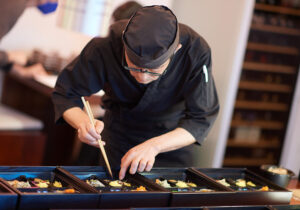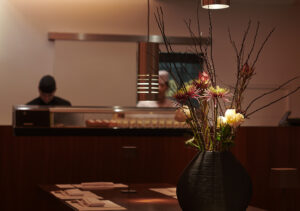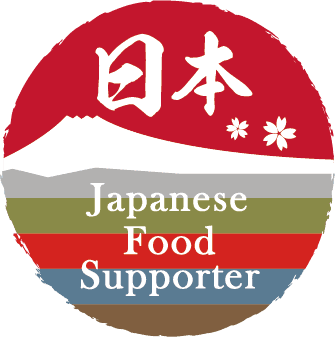"Sakamai" - rice varieties for sake brewing
Rice is an incredibly versatile food and exists in countless varieties and genera.
In Japan, of course, large quantities of rice of the genus "Japonica" (O. sativa subsp. Japonica) are grown, whether it is used for eating or for brewing sake.
Japan is for many years Self-sufficient in rice and protects the domestic rice industry with appropriate import tariffs.
Which rice is suitable for brewing sake?
In theory, sake can be brewed with any type of rice. However, for professional sake production one uses only specially suitable varieties, which have completely different characteristics from the edible rice (Japanese: Shokuyōmai 食用米) and are grouped under the Japanese term "Sakamai" (酒米).
For the Premium sake production such as Ginjō, Daiginjō, and Honjozō, preference is given to the use of specific, particularly suitable rice locations, collectively known by the technical term "Shuzō-Kōtekimai" (酒造好適米).
For simplicity, we will refer to this Shuzō-Kōtekimai as "sake rice" here.
Difference between sake rice and edible rice
In order to brew premium sake special rice varieties bred, which, like the edible rice popular in Japan, belong to the round-grain rice group, but have significant differences from it:
The rice grains differ mainly in the distribution of ingredients (1.) and in their size (2.).
- In the eating rice are the Minerals, fats, proteins and Strength evenly distributed. In the sake rice is the Arrangement changed:
Minerals, fats and proteins are found in the outer layers and starch mainly in the center of the rice grain.
This inner area, is called the "Shinpaku" (酒米). The shinpaku is soft and has small gaps. The mycelium of the Kōji fungus then enters these gaps and multiplies inside the rice to produce enzymes in the starch, which are later converted into sugar.Protein and fat bring out the good taste in eating rice, but are negative factors in sake brewing.
Too much protein produces undesirable flavors, and too much fat interferes with the production of the aromatic components typical of sake. These ingredients, which would affect the quality of a sake, are more likely to be found in the outer areas of the rice grain. Therefore, the outside of the rice is "polished away" during sake brewing to achieve a finer flavor. For edible rice, about 10 % of the outer surface is removed, but for sake rice, more than 30 %. In some cases, such as some Daiginjō, it is even more than 74 %. - Sake rice grains are about a quarter larger than conventional round rice. This makes it heavier and grows on taller ears. However, the larger ears bend relatively easily, which makes harvesting these rice varieties more difficult. Many varieties must be harvested entirely by hand, or at least re-gathered.
How is (sake) rice grown?
Interestingly, unlike the grapes of a vineyard, the sake rice is usually not grown by the sake brewery, but by specialized rice farmers.
This also has to do with the fact that until 1990 it was not allowed for sake producers to own a sake brewery and a rice field at the same time.
However, it has also led to a particular, typically Japanese specialization for the complicated cultivation of Shuzō-Kotekimai in particular. guided.
Recently, some modern sake brewers with a special focus on quality have also started to grow their own, often experimenting with special rice varieties. The prerequisite for this is, of course, the suitable geographical location of the brewery.
For example, the legendary Kuheiji Brewery, whose current Tōji learned winemaking in France, is very concerned about mastering terroir.
In the cultivation of rice, a main distinction is made between Wet cultivation and Dry mounting, although only wet cultivation is actually relevant for sake in Japan.
Wet cultivation on rice terraces - A traditional, widely used method
Rice - unlike many other crops - requires Very large quantities of water. Most rice plants grow best in warm, humid environments. Over time, therefore, wet rice cultivation evolved as the ideal practice.
When growing wet rice, the soil surface (within the basin or terrace) should be exactly horizontal, so that the water level is the same everywhere.
Before planting or sowing, the subsoil is compacted to prevent water and nutrient loss through seepage. The top layer should be an even and fine soil or a layer of mud.
It takes between 3,000 and 5,000 liters of flowing rainwater or river water for rice farmers to harvest one kilogram of rice.
From seed to harvest - manual labor on the rice terrace
First, the fields are prepared for sowing. First, the seedlings are preplanted and then planted in the fields, which are flooded by rain or river water. In order to harvest the rice, the water is then allowed to drain away. After that, the grains are cleaned and dried.
Just as it was 3,000 years ago, an elaborate (water) system of bamboo pipes, canals and small ditches distributes the water. It flows evenly from the top to the bottom terrace and is always in motion.
Over time, the rice has developed a kind of aeration system for its roots. This means that it has no difficulty with the large amount of water. The water also prevents problems from weeds and pests.
Rice terraces are an impressive example of how sustainable food production is possible without harming nature.
Wet rice is the only crop that can be grown in monoculture for thousands of years. Even today, work on the rice terraces is largely characterized by manual labor, although there are of course many small, specialized machines, especially in Japan, that make rice cultivation and harvesting much easier.
Dryland rice cultivation: rice cultivation in regions with low precipitation
In the late Jomon period of the Japanese calendar (about 3,000 years ago), when rice cultivation was first introduced to Japan, rice was mainly grown in dry fields. Even then, sake was also brewed in Japan, so theoretically there was also sake from dry rice cultivation.
With the progress of water management, however, wet cultivation eventually became predominant in Japan.
In other Asian countries outside Japan, rice is still grown in dry fields.
According to Data from the Ministry of Agriculture the rice harvest in 2020 was 7,226,000 tons of wet-cropped rice and 1,500 tons of dry-cropped rice - so there is only a vanishingly small amount of dry-cropping in Japan, often to grow Mochi rice.
In general, rice farmers in Asia often use dry rice cultivation instead of wet rice cultivation in higher altitude growing areas. Irrigation here is mainly provided by rainfall.
Dry rice is grown mainly in the mountains or regions with little rainfall. This rice cultivation is very costlybecause pests are not kept away by the water. The rice farmers must regularly check the plants for pest infestation and remove the weeds.
Nevertheless, dry farming has its advantages, because it allows farmers to grow rice even in areas where little water is available. The fields are located up to 2,000 meters above sea level. Dry rice cultivation uses a subspecies of today's rice that is not adapted to flooding.
Dry rice cultivation is more complex, thus more expensive, and yields less. It is therefore not a real alternative to wet rice cultivation. The rice grown in this way has its own very intense aroma - which is perhaps one of the reasons why dry rice cultivation is no longer used for sake rice in Japan or why no sake is made from dry rice today.







